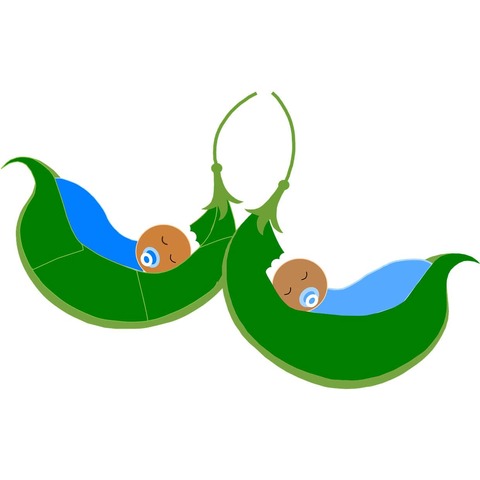Although scientists are still trying to learn exactly why people need sleep, animal studies show that sleep is necessary for survival. Too little sleep leaves us drowsy and unable to concentrate the next day. It also leads to impaired memory, poor physical performance and mood swings. It is undoubted truth that we need deep sleep. Activity in parts of the brain that control emotions, decision-making processes, and social interactions is drastically reduced during deep sleep, suggesting that this type of sleep may help people maintain optimal emotional and social functioning while they are awake. Deep sleep coincides with the release of growth hormone in children and young adults.
DREAMING AND REM SLEEP
We typically spend more than 2 hours each night dreaming. Scientists realized that the strange, illogical experiences we call dreams almost always occur during REM sleep. While most mammals and birds show signs of REM sleep, reptiles and other cold-blooded animals do not.
SLEEP AND CIRCADIAN RHYTMS
Circadian rhythms are regular changes in mental and physical characteristics that occur in the course of a day. Most circadian rhythms are controlled by the body’s biological “clock.” Circadian rhythms can be affected to some degree by almost any kind of external time cue, such as the beeping of your alarm clock, the clatter of a garbage truck and so on. When travelers pass from one time zone to another, they suffer from disrupted circadian rhythms, an uncomfortable feeling known as jet lag. To reduce the effects of jet lag, some doctors try to manipulate the biological clock with a technique called light therapy.
SLEEP AND DISEASES
Infectious diseases tend to make us feel sleepy. This probably happens because cytokines, chemicals our immune systems produce while fighting an infection, are powerful sleep-inducing chemicals. People with depression, for example, often awaken in the early hours of the morning and find themselves unable to get back to sleep. Sleeping problems are common in many other disorders as well, including Alzheimer’s disease, stroke, cancer, and head injury. These sleeping problems may arise from changes in the brain regions and neurotransmitters that control sleep, or from the drugs used to control symptoms of other disorders.
SLEEP DISORDERS
These disorders interfere with work, driving, and social activities. Doctors have described more than 70 sleep disorders, most of which can be managed effectively once they are correctly diagnosed. The most common sleep disorders include insomnia, sleep apnea, restless legs syndrome, and narcolepsy.
INSOMNIA
Almost everyone occasionally suffers from short-term insomnia. This problem can result from stress, diet, or many other factors. Insomnia almost always affects job performance and well-being the next day. It affects about 40 percent of women and 30 percent of men. Mild insomnia can often be prevented or cured by practicing good sleep habits. For more serious cases of insomnia, researchers are experimenting with light therapy and other ways to alter circadian cycles.
SLEEP APNEA
Sleep apnea is a disorder of interrupted breathing during sleep. It usually occurs in association with fat buildup or loss of muscle tone with aging. This problem, called obstructive sleep apnea, is usually associated with loud snoring. Sleep apnea also deprives the person of oxygen, which can lead to morning headaches, a loss of interest in sex, or a decline in mental functioning. It also is linked to high blood pressure, irregular heartbeats, and an increased risk of heart attacks and stroke.
RESTLESS LEGS SYNDROME
Restless legs syndrome (RLS) causes unpleasant crawling, prickling, or tingling sensations in the legs and feet. It is emerging as one of the most common sleep disorders, especially among older people, though symptoms may develop at any age. In some cases, it may be linked to other conditions such as anemia, pregnancy, or diabetes. RLS often can be relieved by drugs that affect the neurotransmitter dopamine, suggesting that dopamine abnormalities underlie these disorders’ symptoms.
NARCOLEPSY
People with narcolepsy have frequent “sleep attacks” at various times of the day, even if they have had a normal amount of night-time sleep. These attacks last from several seconds to more than 30 minutes. People with narcolepsy also may experience hallucinations, temporary paralysis when they awaken, and disrupted night-time sleep. The symptoms of narcolepsy typically appear during adolescence, though it often takes years to obtain a correct diagnosis. The disorder is usually hereditary, but it occasionally is linked to brain damage from a head injury or neurological disease. Once narcolepsy is diagnosed, stimulants, antidepressants, or other drugs can help control its symptoms.
THE FUTURE
Sleep research is expanding and attracting more and more attention from scientists. Researchers now know that sleep is an active and dynamic state that greatly influences our waking hours. Innovative techniques, such as brain imaging, can now help researchers understand how different brain regions function during sleep and how different activities and disorders affect sleep. Mild insomnia can often be prevented or cured by practicing good sleep habits. For more serious cases of insomnia, researchers are experimenting with light therapy and other ways to alter circadian cycles.
Life is only a dream, my love.
Richard Bach

